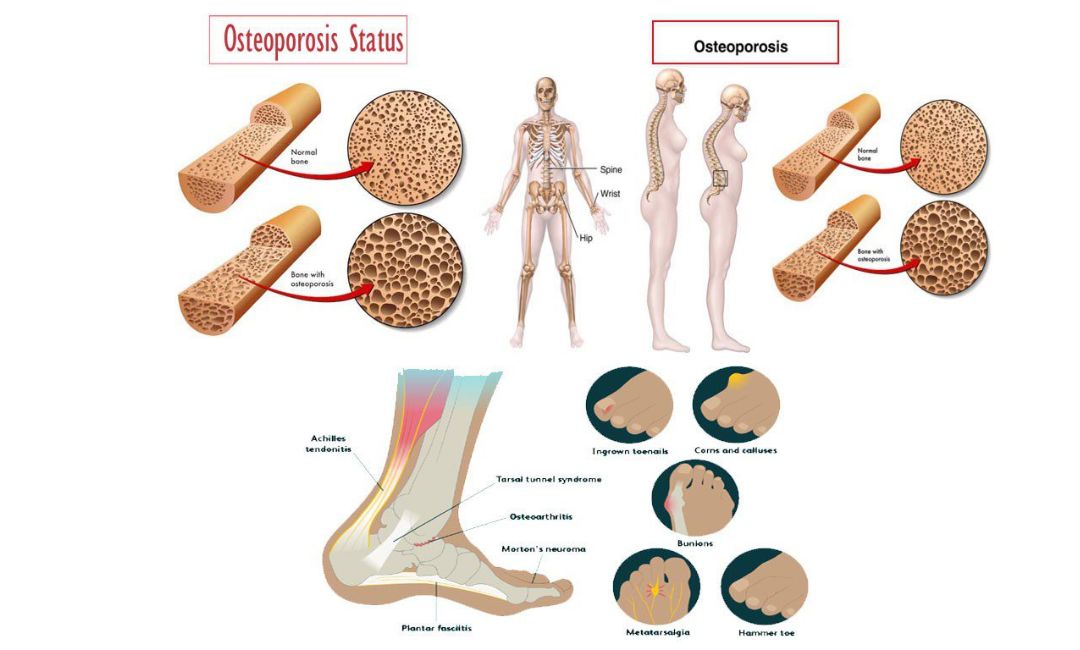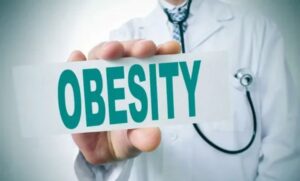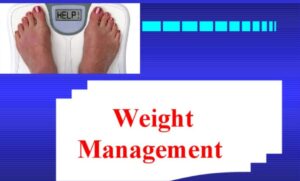Osteoporosis is a silent disease in which bones become weaker, more fragile, and more likely to break. It is usually asymptomatic until a fracture occurs. About 40 million people in the United States and millions more worldwide experience this, particularly the elderly. It affects predominantly the hips, spine, and wrists. Though more frequently seen in women following menopause, it can occur even in men. The good news is that osteoporosis is preventable and manageable by taking a proactive approach.
In this article, we will investigate the causes, symptoms, risk factors, diagnosis, treatment, and prevention of osteoporosis. Whether you are at risk or want to maintain healthy bones, this guide can help you better understand the condition.
What Is Osteoporosis?
Osteoporosis is a disease in which the bones become weak and can break. Bones are living tissues, constantly being broken down and reformed. In people with osteoporosis, the rebuilding occurs more slowly than the breakdown. This causes bones to become porous and brittle. The term osteoporosis is derived from the Greek and means “porous bone”.
When bones are too weak, they can break from even a minor fall or, in serious cases, from sneezing or coughing. It frequently involves the spine, hips, and wrists.
Causes of Osteoporosis
Several factors can lead to bone loss. The most common causes include:
-
Aging
Bone production diminishes as we get older. Beyond age 30, people lose more bone than they make.
-
Hormonal Changes
In women, plummeting estrogen levels in the years following menopause increase bone loss. Men’s gradual loss of testosterone with age, additionally, can also cause osteoporosis.
-
Poor Nutrition
A lack of calcium, as well as of vitamin D and protein, may weaken bones.
-
Lack of Physical Activity
When we use our bones, they become stronger. Inactivity can also accelerate bone loss.
-
Medical Conditions
Some diseases, including rheumatoid arthritis, hyperthyroidism, and celiac disease, might raise the risk.
-
Medications
And certain drugs, including corticosteroids, can cause thinning of the bones if taken long-term.
Symptoms of Osteoporosis
Osteoporosis is frequently referred to as a “silent disease” because early on, people usually do not have any symptoms. But as the condition deteriorates, you may experience:
- Fractured vertebrae, which lead to back pain
- Loss of height over time
- A bow-shaped, round-shouldered position (or kyphosis, a “dowager’s hump”)
- Fractures that happen more easily than they should
Fractures from osteoporosis are painful and can cause long‐term disability, particularly hip fractures.
Risk Factors
Anyone can develop osteoporosis, but certain factors increase the risk. These include:
| Risk Factor | Details |
| Age | Risk increases with age, especially after 50 |
| Gender | Women are more likely to develop osteoporosis |
| Family history | Genetics play a role in bone health |
| Body size | Thin or small-framed individuals are at higher risk |
| Race | White and Asian populations have a higher risk |
| Lifestyle choices | Smoking, alcohol, and inactivity raise the risk |
| Diet | Low calcium and vitamin D intake |
| Hormonal imbalance | Low estrogen or testosterone |
| Medical conditions & drugs | Conditions and medications that affect bone health |
How Is Osteoporosis Diagnosed?
Doctors use several methods to diagnose osteoporosis:
-
Bone Density Test (DEXA Scan)
This test shows hip and spine bone density. And it’s painless and involves only very small amounts of X-rays.
-
Blood and Urine Tests
These tests can exclude other disorders that affect bone health or reflect calcium levels.
-
X-rays
Fractures may be incidentally detected on imaging, particularly in the spine.
Bone density test results are reported in T-scores. One interpretation is that a T-score of -2.5 or more is osteoporosis.
Treatment Options
Treatment for osteoporosis focuses on strengthening bones, reducing bone loss, and preventing fractures.
1. Medications
There are several types of drugs used to treat osteoporosis:
- Bisphosphonates (e.g., Alendronate, Risedronate) to slow bone loss
- Denosumab, an injection that helps prevent bone breakdown
- Hormone therapy (for postmenopausal women)
- Selective estrogen receptor modulators (SERMs) like Raloxifene
- Anabolic agents like Teriparatide stimulate new bone growth
2. Nutritional Treatment for Osteoporosis
Nutrition is a significant factor associated with the prevention and treatment of Osteoporosis. Consuming bone-healthy nutrients can slow bone loss, help build stronger bones, and lower the risk of fractures. For personalized advice, you can consult with nutrition experts through Bear Goal Free Consultation.
1. Calcium
Bone is primarily composed of calcium. Adults require just the minimum amount of calcium each day in order to keep bones dense and strong.
Recommended Daily Intake:
| Age Group | Calcium (mg/day) |
| Adults 19–50 years | 1,000 mg |
| Women 51+ | 1,200 mg |
| Men 71+ | 1,200 mg |
Best Food Sources:
- Milk, yogurt, cheese
- Leafy greens (kale, bok choy)
- Fortified cereals and juices
- Almonds
- Tofu (calcium-set)
If you can’t meet your needs through food, a calcium supplement may be recommended.
2. Vitamin D
Vitamin D helps the body absorb calcium and supports bone metabolism. Without it, bones can become thin and brittle.
Recommended Daily Intake:
| Age Group | Vitamin D (IU/day) |
| Adults under 70 | 600 IU |
| Adults over 70 | 800 IU |
Best Sources:
- Sunlight exposure (10–30 minutes daily)
- Fatty fish (salmon, mackerel, sardines)
- Egg yolks
- Fortified milk and cereals
- Vitamin D supplements
3. Protein
Protein is essential for bone repair and maintenance. However, extremely high protein diets without enough calcium may harm bones.
Recommended Intake:
- 0.8–1.0 g per kg of body weight per day
Good Sources:
- Lean meat, poultry, fish
- Eggs
- Dairy products
- Legumes (beans, lentils)
- Soy products
4. Magnesium
Magnesium supports bone structure and helps with calcium absorption.
Sources:
- Nuts (almonds, cashews)
- Whole grains
- Avocados
- Spinach
- Dark chocolate
5. Vitamin K
Vitamin K is involved in bone mineralization. Low levels are linked to a higher risk of fractures.
Sources:
- Leafy greens (spinach, kale, broccoli)
- Brussels sprouts
- Fermented foods (like natto)
6. Zinc
Zinc helps form the mineral portion of bone and supports bone-building cells.
Sources:
- Meat
- Shellfish
- Pumpkin seeds
- Legumes
- Whole grains
7. Potassium
Potassium helps neutralize acids in the body that can deplete bone minerals.
Sources:
- Bananas
- Sweet potatoes
- Beans
- Oranges
- Yogurt
8. Omega-3 Fatty Acids
Omega-3s may reduce inflammation that can lead to bone loss.
Sources:
- Fatty fish (salmon, tuna)
- Chia seeds
- Flaxseeds
- Walnuts
Foods to Limit or Avoid
While some foods strengthen bones, others can harm them when consumed in excess:
| Food/Ingredient | Why to Limit |
| Excess salt | Causes calcium loss through urine |
| Soft drinks (colas) | High in phosphoric acid, which may weaken bones |
| Caffeine (high intake) | Can interfere with calcium absorption |
| Alcohol (heavy use) | Slows down bone formation |
| Processed foods | Often low in bone-supporting nutrients |
3. Lifestyle Changes
Exercise, quitting smoking, reducing alcohol, and fall prevention are key.
4. Physical Therapy
Helps improve posture, balance, and strength to reduce fracture risk.
Living With Osteoporosis
There are treatments to manage osteoporosis. Most people have active, healthy, and satisfying lives after treatment. Help from health care providers, a healthy diet, physical activity, and medicines (if needed) all can lower the risk of fractures. For personalized health tracking and nutritional guidance, you can use tools like the BMI Calculator, Ideal Body Weight Calculator, and Water Intake Calculator.
Here are some simple, daily habits to consider:
- Keep the back as straight as possible to help protect the spine.
- Use assistive devices, such as a cane, if necessary.
- Continue to engage socially to maintain mental health.
- Stay in follow-up with your physician for bone health checks.
Conclusion
Osteoporosis is silent, but its consequences are loud. Bone breaks can be life-altering in a moment. The good news: Osteoporosis is preventable for many and often manageable with treatment. Begin early on with bone-friendly habits or start right away if you are already at risk. For related insights on digestive health and overall wellness, you can also read Peptic Ulcers: Symptoms & Diagnosis.
Eating right, exercising, steering clear of bad habits, and getting regular readouts can make a big difference. If you believe you are at risk, or are aware that you have a change in height or posture, do not discount it. Consult a doctor and take steps toward protecting your bones. For personalized advice and support, you can contact Bear Goal through their Contact Us page.
After all, strong bones are the foundation of a strong life.






